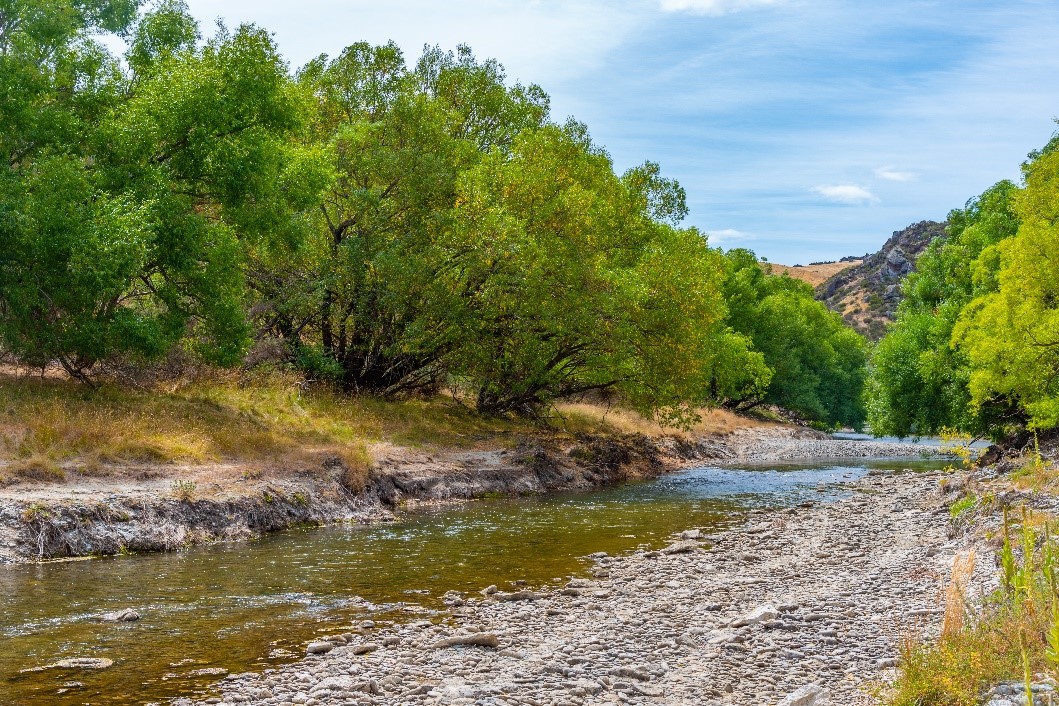The NIWA forecast for the next few weeks is for Otago’s weather to be dryer than in previous years, says ORC’s Acting General Manager Regulatory Joanna Gilroy.
As of 21 February, Otago waterways now recording low flows - which may put additional stress on the water way and their ecological values - include the Pomahaka at Burkes Ford, the Shag at Craig Rd, the Taieri at Outram, the Waitahuna at Tweeds and the Waiwera at Maws.
Other monitoring locations are not far off reaching low flow situations, when more consent holders may need to cease taking water.
“Rivers throughout Otago are running low and we need people to conserve water and use it efficiently, if taking from rivers, lakes or streams,” she says.
If the current dry period continues for an extended period, particularly in the driest parts of inland Otago, the council may need to consider a water shortage direction. If this became necessary, this measure would be forecast and communicated ahead of time so landowners can prepare.”
A water shortage direction is where councils ask people to restrict, suspend or share taking water, as occurred during very dry conditions in Southland last year. The more challenging step of a water shortage direction is possible under the Resource Management Act.

Ms Gilroy said this is one tool in the toolbox, but that through continued great work by Otago’s water users and wider community we can take steps now to conserve water to avoid this step.
The current regional context is that QLDC, CODC, DCC and CDC all have urban communities that have water restrictions.
Ms Gilroy said council staff in the particularly dry Waiwera Catchment in South Otago, for example, had been out walking the river checking for adverse effects on the instream values and knocking on doors talking to landowners on adjacent properties.
“ORC staff are preparing; we are discussing water use, updating contacts and sharing where members of that community can find information. We know this is a stressful time for people and are ensuring they have the information they need to make decisions.”
“The Regulatory Data team has been phoning or emailing holders of consents in all the catchments that have gone into low flows, as well as monitoring telemetered water takes daily. Members of our Environmental Monitoring Team are out weekly to all the low flow refence sites checking the state of the rivers at those points and checking the accuracy of the flow data.”
“Landowners are listening and acting, and we are pleased to see some communities are taking control of the situation themselves and grouping together to ration water. We would like to acknowledge their important work.“
“Almost all water users are complying with the conditions in their consent and we’re following up directly with consent holders where non-compliance has been identified,” she said.
Rural communities still have water for domestic use and stock water. But as many communities are limited or restricted for their irrigation water, making sure there are plans in place around water use is key.
“Communities should be planning now for how they are going to ensure they have feed for their stock over winter.”
Council Chair Gretchen Robertson is praising communities such as in the Upper and Strath Taieri where landowners have worked together, sharing limited water, and maintaining a limited amount of irrigation beyond what they would have if they had not taken the initiative.
“If the communities work together like this through this weather event, they are more likely to get through without Council having to intervene with a Water Shortage Direction.
“We ask all affected communities in Otago to work together and share water to make it last as long as possible, rather than wait longer when rivers may become even more stressed.”
Ms Gilroy says landowners should ensure they maintain efficiencies around stockwater infrastructure such as checking for leaks.
“For those that can still irrigate, it is common sense to stick to good practice principles, such as maintaining suitable irrigation depths and irrigating at times of day when water is more likely to be absorbed.
Those in urban areas are encouraged to follow the water use restrictions in place by their local Council and be mindful of their water use as well.”
So that people can check river flows, ORC has a new environmental data portal that will collate data from more than 250 water monitoring sites around Otago. This replaces the existing flood and low flow warning sites currently available on ORC’s website.
The new system will give people access to a user-friendly map which includes improved context of what is happening across the region, plus the ability to view and download historical data.
For more information on low flows in Otago’s monitoring sites
